
1、SAM Software Overview
SAM, a universal software for ocean structure analysis, aims to meet the new demand for intelligent prediction and evaluation of basic performance such as environmental loads, structural safety, vibration noise, and explosion impact in the design and optimization of ocean structures. It is developed by the China Shipbuilding Science Research Center in conjunction with domestic advantageous forces, and has completely independent intellectual property rights, efficient parallelism, and engineering applications in the field of ocean engineering.
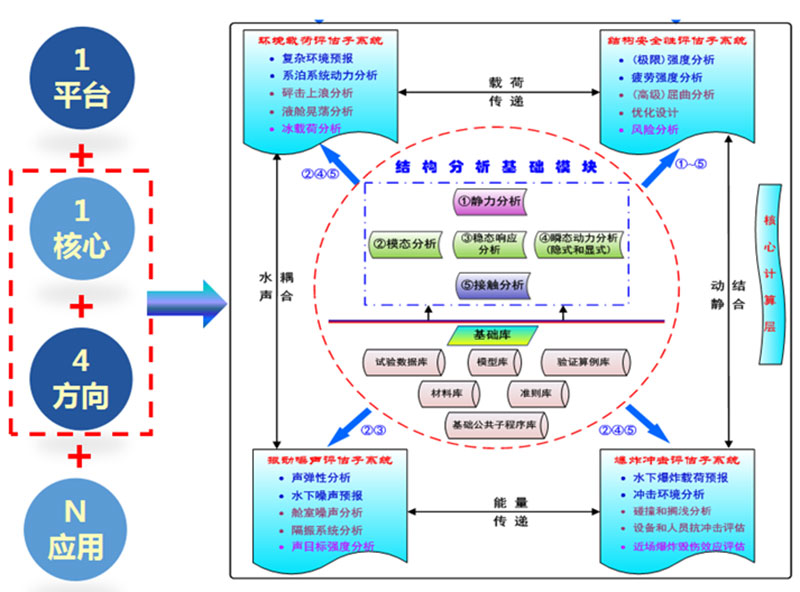
SAM software architecture display diagram
2、2025 New version highlights
Overall architecture: Based on the original foundation, functional design and development are carried out around the ship structure development process, covering the ship design stage and drawing review process comprehensively. It supports rapid simulation modeling, visualization of calculation results, and secondary software development for ship characteristics; Fully benchmarking against Abaqus, compatible with mainstream general/specialized CAE software data standards, adopting a platform+plugin development model, and launching an integrated front-end and back-end processing platform architecture.
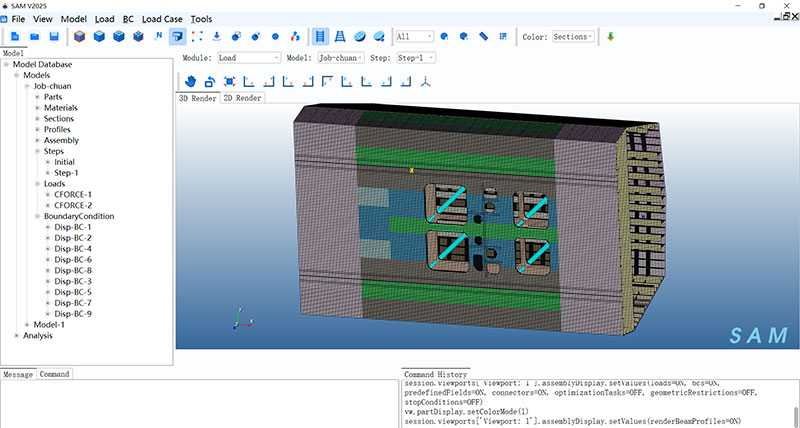
SAM software interface display diagram
Pre - and post-processing platform: It has integrated data interfaces with domestic CAD software such as Coral Marine and Zhongwang 3D, greatly enhancing functions such as grid modeling, grid division, and grid refinement. The commercial software interface is more complete, and various analysis and setting processes are basically consistent with mainstream commercial software.
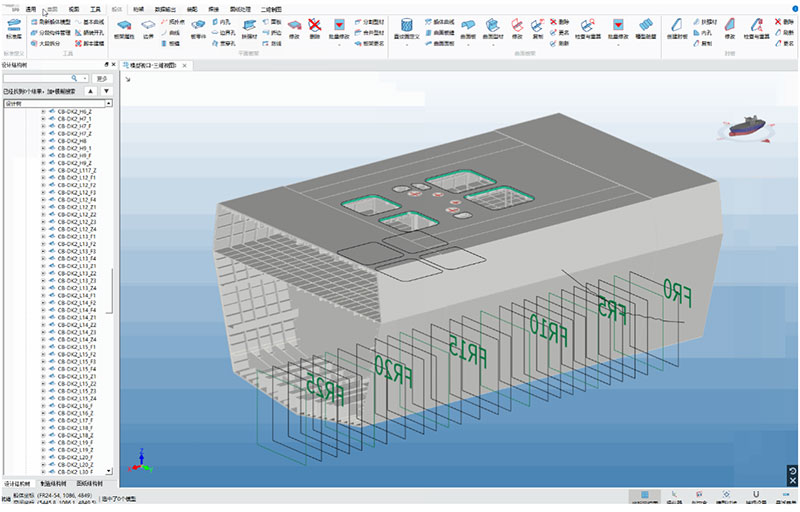 |
 |
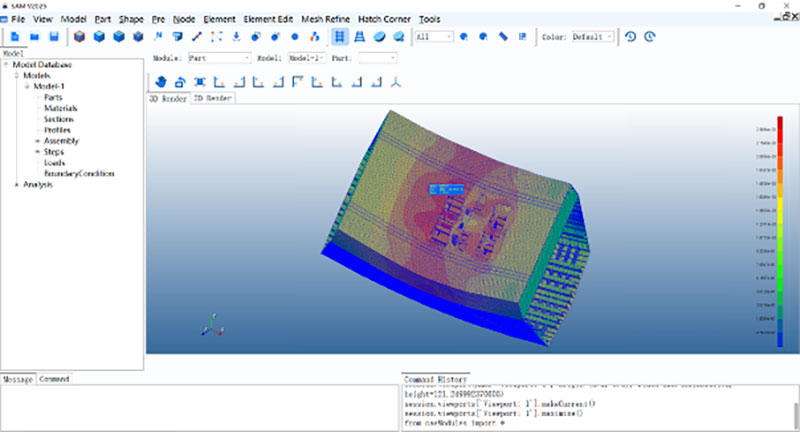 |
Support importing coral Marine cabin models and conducting finite element analysis
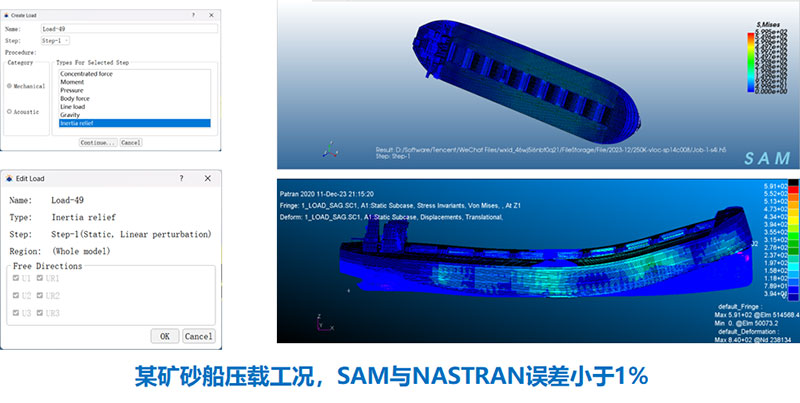
Accuracy verification of ship structure inertia release

Ship feature analysis module integrated with CCS specifications
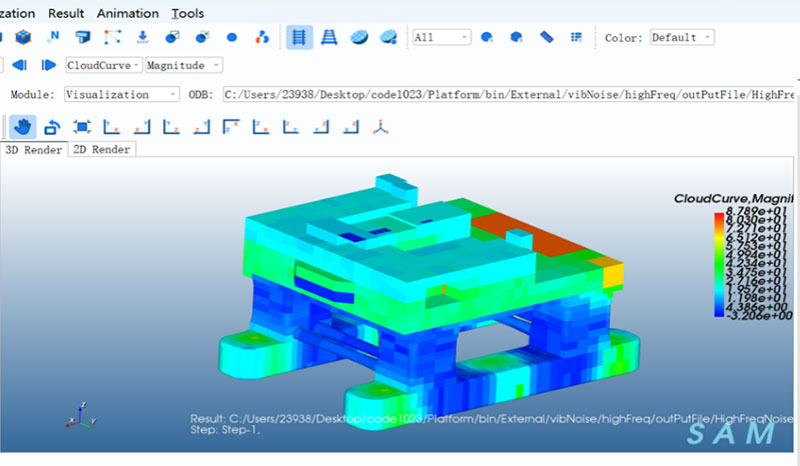
Full frequency acoustic evaluation module
3、FUNCTION
3.1 Finite element solution
It includes commonly used structural finite element analysis functions such as static analysis, modal analysis, steady-state analysis, transient analysis, and contact analysis. Through a unified data interface, it supports the evaluation and coupling of various specialties in marine structural analysis, and can achieve:
1. Overall process based on incremental iteration method and open object-oriented architecture design
2. Various basic libraries with structural analysis capabilities, supporting custom units, materials, and other extensions
3. The accuracy is comparable to that of commercial structural CAE software
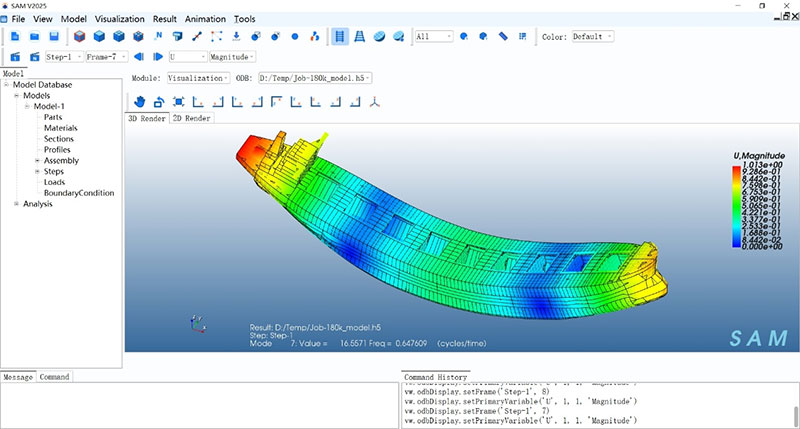
Display of Finite Element Modal Analysis Results
3.2 Environmental Load Assessment
Based on complex wave environment water wave models, three-dimensional hydroelasticity theory, mooring dynamics, generalized Wangner method, and discrete element method, it is possible to achieve:
1. Complex environmental forecasting
2. Wave load forecasting
3. Dynamic analysis of mooring system
4. Bangbang Upward Wave Analysis
5. Ice load analysis
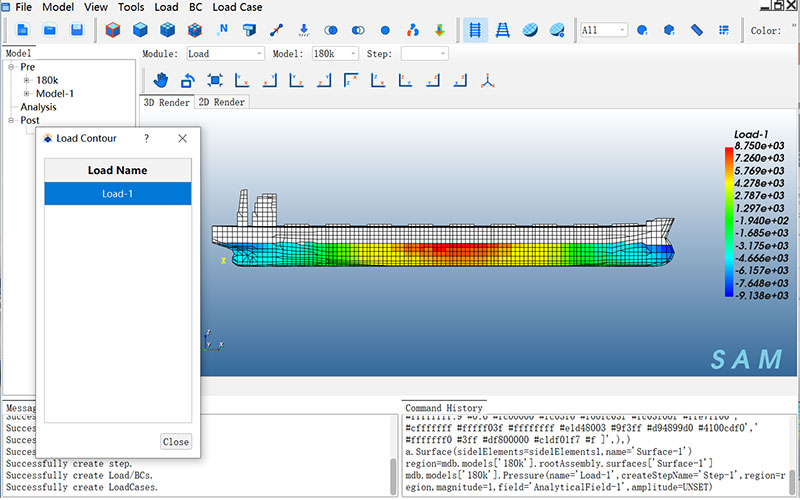
Environmental Load Assessment Display Diagram
3.3 Structural Safety Assessment
Based on theories such as the ideal structural element method, cumulative damage method, orthotropic plate elastic large deflection theory, genetic algorithm, and logical fuzzy model, it is possible to achieve:
1. Ultimate strength analysis
2. Fatigue strength analysis
3. Buckling strength analysis
4. Risk analysis
5. Optimize design
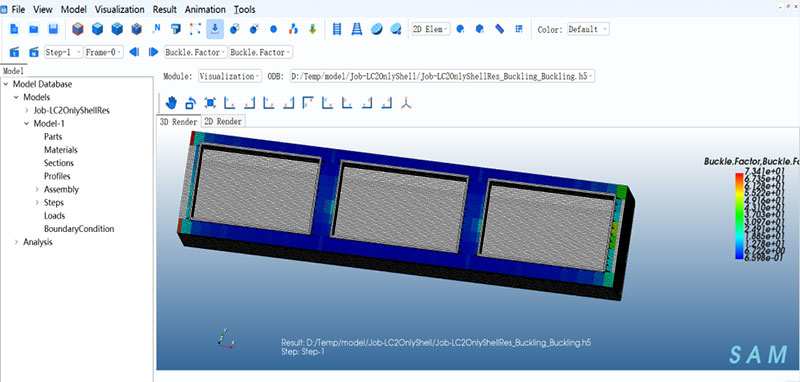
Structural Safety Assessment Display Diagram
3.4 Vibration and Noise Assessment
Based on theories such as three-dimensional acoustic elasticity theory, statistical energy method, dynamic stiffness method, power flow method, and energy finite element method, it is possible to achieve:
1. Structural noise analysis
2. Efficiency analysis of vibration isolation system
3. Cabin noise analysis
4. Underwater noise analysis
5. Analysis of Sound Target Intensity
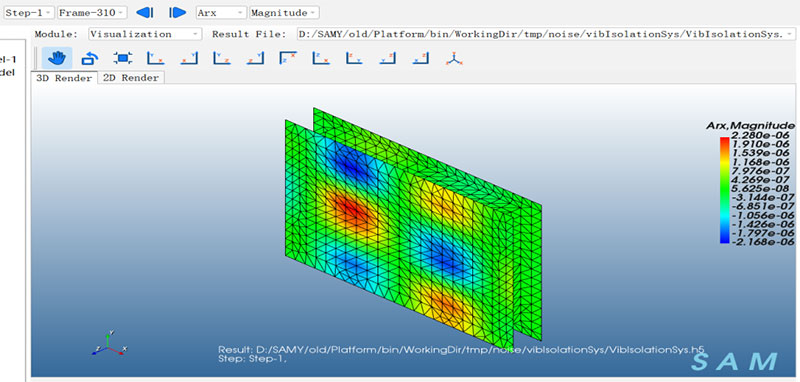
Vibration and Noise Assessment Display Diagram
3.5 Explosion Impact Assessment
Based on theories such as underwater explosion theory, second-order double asymptotic method, dense modal analysis method, and structural dynamics, it is possible to achieve:
1. Prediction of underwater explosion load
2. Impact environment forecast
3. Impact resistance assessment of equipment
4. Analysis of near-field explosion damage effects
5. Collision and grounding analysis
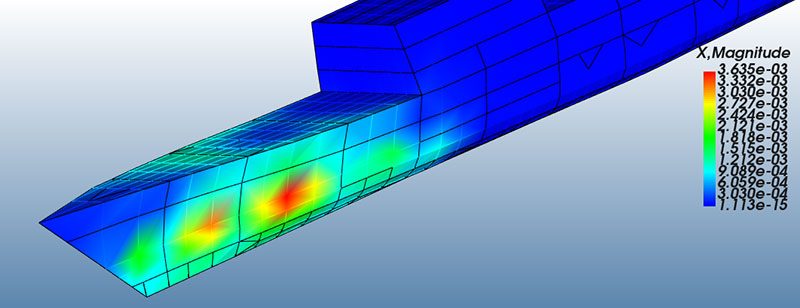
Explosion impact assessment display diagram
4、Software Features
Specialization: capable of covering various application scenarios required for ship structural performance analysis.
High precision: As the largest experimental base in the country, 702 Institute has rich theoretical and data accumulation. The software has undergone systematic verification and algorithm correction during development, debugging, and testing. Therefore, in certain application scenarios, the calculation results of SAM software are closer to physical experimental results than those of foreign software.
High efficiency: A template has been specially designed for ship structure modeling in pre-processing, making modeling more convenient. In terms of solving efficiency, we cooperated with Wuxi Shenwei the Taihu Lake Zhiguang to greatly improve the efficient parallel computing capability.